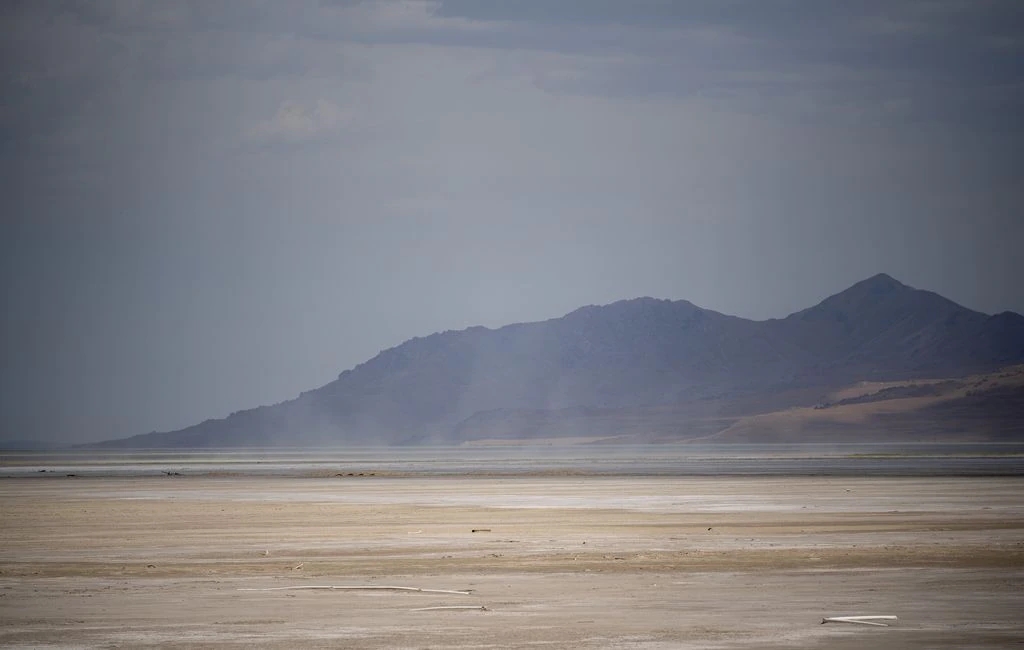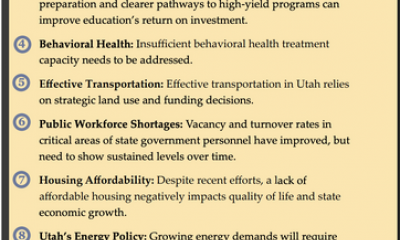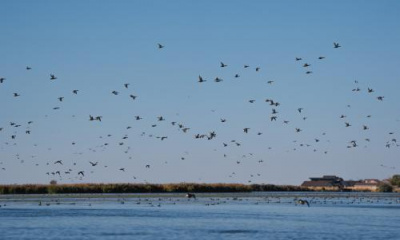A state representative has a lofty plan to save Utah’s imperiled lake and drought-stricken communities, but first, he wants around $50 million to explore how much salty water is underground.
Since lawmakers are throwing around big ideas to save the Great Salt Lake, like a multibillion-dollar pipeline to the ocean, why not go bigger? Like, say, drilling for salty groundwater, desalinating it and pumping it over to the Great Salt Lake, all while using a little-tested form of molten salt nuclear energy to do it?
It is an idea Rep. Steven Lund, R-Manti, floated in earnest at the Natural Resources, Agriculture, and Environment Interim Committee on Wednesday. Between the Colorado and Great basins, Utah is likely sitting on an ocean of saline groundwater, Lund said. He is seeking around $48 million to build some test wells in the desert and figure out just how much, but he said it’s possibly close to 1 billion acre-feet.
And based on his calculations and conversations, the Great Salt Lake only needs an influx of 500,000 acre-feet to heal, meaning the rest of that water could get piped to drought-stricken communities.
“Brigham Young was right,” Lund said in his presentation. “This is the place, when it comes to water. ... You just have to figure out how to get it.”
Even though the Great Salt Lake is already salty, the pumped groundwater would need to be desalinated so it doesn’t worsen the lake’s rate of evaporation or lead to salinities that are harmful to the ecosystem.
“This is as close to what Mother Nature does as absolutely possible,” Lund said, “in my opinion.”
Desalination is energy-intensive and expensive, which is where the molten salt nuclear reactors come into play. Lund said they could be carted around on semitrucks as modular units.
He invited Matthew Memmott, an associate professor at Brigham Young University, to explain the technology’s benefits. Memmott is studying thorium salt as an energy source at a remote lab in Emery County.
Molten salt reactors are not prone to the meltdown disasters seen at traditional uranium nuclear plants, Memmott told lawmakers. Their small size and high temperatures make it possible to extract energy for pumping wells and desalinating water.
“If you had about 86 of these [modular units] fully dedicated to desalinating water.” Memmott said, “… you could fill Lake Powell, from bottom to top, in about 14 months.”
He estimates the energy to be astoundingly cheap, too, at around three cents per kilowatt hour.
Based on Lund’s calculations, it would take about 3,100 wells working at full capacity to fill the Great Salt Lake in a year. He even heaped on praise for the $60 million former Gov. Norm Bangerter spent in 1987 building pumps to bail out the Great Salt Lake when it was flooding. That project, which would cost more than $160 million in today’s dollars, was only used for a couple of years. But Lund called it “visionary.”
“My only regret is that he didn’t do more of them,” Lund said. “Had he done another 10 or 20 of those, we would have a facility that could actually transport this water.”
Speaking of transporting water, Lund said even if his salty groundwater project gets funded, the pipeline to the Pacific Ocean should not be taken off the table. Instead, he sees a pipeline running across and through the Wasatch Mountains, carrying treated saline water as far as St. George.
“I would recommend this be the first leg that’s built” of the Pacific pipeline, Lund said. “Not only can we heal the Great Salt Lake, but there may be ways we can moderate our drought.”
The proposal only received a few questions from lawmakers on the committee before they moved on to their next agenda item. But Lund had one more parting comment.
“This desalination also works,” he said, “with coal-fired power plants, just as an FYI.”








